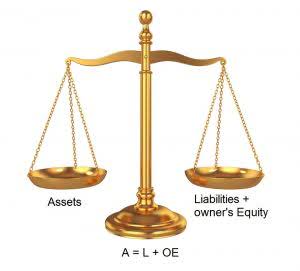Trade discount is not recorded in the books, and Purchases are shown as net of trade discount received. Since companies do not know when exactly customers will avail of their discount offer, they can create a contra account for discounts at the time of issuance. A current liability account that reports the amounts owed to employees for hours worked but not yet paid as of the date of the balance sheet. A balance on the left side of an account in the general ledger. As a result these items are not reported among the assets appearing on the balance sheet.
How to Record Sales Discounts: The Nitty-Gritty
However, the sales discount is considered minimal; therefore, we often recorded at the time of payment if the customer makes payment within the discount period. Accurately accounting for sales discounts is crucial as it affects both the revenue figures and the tax liabilities of a business. Missteps in this area can lead to significant discrepancies in financial statements, potentially misleading stakeholders about the company’s financial health. Recording sales returns and allowances in a separate contra‐revenue account allows management to monitor returns and allowances as a percentage of overall sales.
Interest Revenues account includes interest earned whether or not the interest was received or billed. Interest Revenues are nonoperating revenues or income for companies not in the business sales discount debit or credit of lending money. For companies in the business of lending money, Interest Revenues are reported in the operating section of the multiple-step income statement.
Presentation of Sales Discounts
- The amount of principal due on a formal written promise to pay.
- If the company buys supplies on credit, the accounts involved are Supplies and Accounts Payable.
- The initial challenge is understanding which account will have the debit entry and which account will have the credit entry.
- By reporting sales discounts separately, a company provides valuable information about its sales practices and the effectiveness of its discount strategies.
- Thus, the net effect of the transaction is to reduce the amount of gross sales.
This usually happens before the seller receives payment from the buyer. The sales on credit are recorded by debiting accounts receivable and crediting the sales account. In cash accounting, on the other hand, sales revenue is recorded only if the money has been received by the company for the delivery of goods or services. It is important to note that sales are operating revenues as they are earned by a company through its business activities.
Difference Between Discount Allowed and Discount Received
- Sales Discount refers to the reduction in the amount due from a customer as a result of early payment.
- A sales account is the record of all sales transactions in the business.
- There are two sides to the cash book, i.e., the Debit side and the Credit side.
- After this, the account balance is then flushed out with closing entries and transferred in aggregate into the retained earnings account, which is an equity account.
- These discounts are not recorded in the accounting books as separate entries; instead, the sale is recorded at the net price after the discount.
- These discounts directly affect the revenue figures reported on the income statement.
Others use the word to signify a net amount, such as income from operations (revenues minus expenses in the company’s main operating activities). Still others use it when referring to nonoperating revenues, such as interest income. Things that are resources owned by a company and which have future economic value that can be measured and can be expressed in dollars.
Example of How to Account for a Sales Discount
For example, when a company borrows $1,000 from a bank, the transaction will affect the company’s Cash account and the company’s Notes Payable account. When the company repays the bank loan, the Cash account and the Notes Payable account are also involved. If the company is dealing with inventory, the journal entries will be a little more complex because two additional accounts will need to be added in order to reflect the changes in inventory. For any company to remain in business, making sales is vital as this is what every company should be thinking of.
A sales discount is a reduction taken by a customer from the invoiced price of goods or services, in exchange for early payment to the seller. The seller usually states the standard terms under which a sales discount may be taken in the header bar of its invoices. When making a credit sale, the company may provide a credit term that encourages its customers to pay early by giving the sale discount if the payment is made within a certain period. In this case, if the customer takes the discount by making early payment on the credit purchase, the company needs to account for the sale discount with a proper journal entry.
Sales discounts refer to the reduced rate on products or services to customers. It is often presented in the form of percentage rate reduction. Liabilities often have the word “payable” in the account title.
Whenever cash is received, the asset account Cash is debited and another account will need to be credited. Since the service was performed at the same time as the cash was received, the revenue account Service Revenues is credited, thus increasing its account balance. Under the net method, sales and accounts receivable are recorded at the net amount after discount. If customers fail to take the sales discount, the missed discount is reported as interest revenue or sales discount forfeited. Likewise, the credit term is usually stated on the sale invoice with the specification of discount percentage and the time period it offers, e.g. “2/10 net 30” or “2/10 n/30”.
A sales journal entry records a cash or credit sale to a customer, it goes beyond recording the total money received by the business from the transaction. Sales journal entries are to also reflect the changes to accounts such as cost of goods sold, inventory, and sales tax payable accounts. As it is not possible to know when or whether the customers will take the discount in the credit term, the company records the gross sales when it makes the sale on credit. Hence, when the discounts are taken by the customers, the company needs to make the journal entry in sales discounts account to have a fair presentation of net sales revenues. Debit the accounts receivable account in a journal entry in your records by the full invoice amount of a sale before a cash discount.
For example, the seller allows a $50 discount from the billed price of $1,000 in services that it has provided to a customer. Sellers can offer sales discounts in several forms such as cash discounts, trade discounts, invoice discounts, and so on. The accounting entries for these discounts must reflect on the balance sheet as well as the income statement.
This happens so because when a sales revenue is earned, it is recorded as a debit in the bank account or accounts receivable and as a credit to the revenue account. If a company’s expenses are more than its revenue, the debit side of the profit and loss account will be higher and the balance in the revenue account will be lower. Adjusting the accounts receivable to reflect sales discounts is a nuanced process. It involves updating the ledger to represent the reduced amount that a business expects to collect from its customers. This adjustment is not merely a clerical task; it provides a realistic view of the company’s financial position. When a discount is offered and utilized by a customer, the accounts receivable balance must be decreased to indicate the lower amount of cash that will be received.
If the revenues come from a secondary activity, they are considered to be nonoperating revenues. For example, interest earned by a manufacturer on its investments is a nonoperating revenue. Interest earned by a bank is considered to be part of operating revenues. A temporary account to which the income statement accounts are closed. This account is then closed to the owner’s capital account or a corporation’s retained earnings account.
How Josh Decided It Was Time to Finish His CPA
A sales discount happens when a seller offers a price reduction to encourage a customer to pay an invoice early. It’s like saying, “Pay me quick, and I’ll make it worth your while! ” Unlike trade discounts, sales discounts proudly strut their stuff on your income statement. We said that sales in accounting refer to the revenues earned when a company transfers its ownership of goods to its customers. Also, we saw that under the accrual basis of accounting, the sale occurs when the required tasks have been completed by the company. In cases whereby customers are allowed to pay at a later date, the sale will be debited to accounts receivable and credited to the sales/revenue account.
Sales are also referred to as revenue in a company’s income statement. A contra sales revenue account–such as Sales Allowances, Returns and Discounts-has a debit balance because it is contrary to the credit balance of a regular Sales Revenue account. Some companies create an allowance account to record the sales discount even though the customer has not made the payment. This is because they want to recognize the discount allowed (expense) in the same period of sales to be in accordance with the matching principle. Continuing with the previous example, the company would report $980 as net sales, not the full $1,000 invoice amount. Over time, these discounts can accumulate, leading to a substantial difference between gross sales and net sales.
This is an owner’s equity account and as such you would expect a credit balance. Other examples include (1) the allowance for doubtful accounts, (2) discount on bonds payable, (3) sales returns and allowances, and (4) sales discounts. For example net sales is gross sales minus the sales returns, the sales allowances, and the sales discounts. The net realizable value of the accounts receivable is the accounts receivable minus the allowance for doubtful accounts. The sales returns and allowances account is known as a contra revenue account. When items are returned or allowances granted, it allows management to track the amounts and look for trends.










